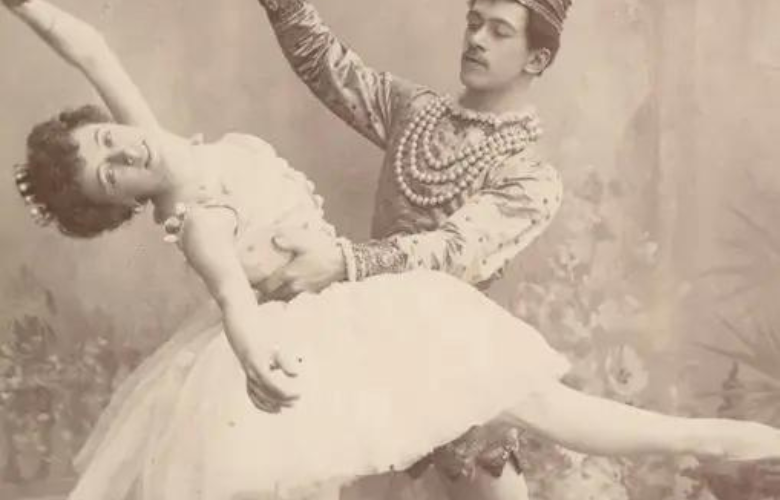
Dreams of sugar plum fairies, tiny toys coming to life, a little girl’s dream to become a dancer. The Nutcracker ballet has been around for over 130 years and many of its themes are still commonly shown on stages across the world.
The two act Christmas story has been on stage since its premier a week before Christmas in 1892 at the Imperial Mariinsky Theatre in St. Petersburg, Russia. However, the show didn’t expand to western countries until the 1940s, nearly 50 years after its original debut. While everyone these days knows of the tale of young Clara and her Christmas Eve adventure, not many know of the origins of the classic bedtime story.
The original casting of The Nutcracker ballet included many infamous names of their time. Antoinetta Dell’Era made the Sugar Plum Fairy the iconic role that it is today. Stanislava Belinskaya portrayed Clara with Sergei Legat playing her Nutcracker Prince. Timofei Stukolkin played the favourite Uncle Drosselmeyer. Much of the costumes quickly became fan favourites as they aided the dancers in telling the classic story. The costumes over time have become more modern for audiences worldwide, but the original concepts are always kept in mind to keep the history of The Nutcracker ballet as intact as possible. The composition and score also haven’t changed since the original opening of the ballet, something that is unheard of for a story that has been told for over 100 years.
Much like the Grimm brothers, the original tale by E.T.A. Hoffmann is set in a darker tone and titled ‘The Nutcracker and the Mouse King’. Clara’s original name in Hoffmann’s story is actually Marie. Once the rights for the story were acquired, the composer Pyotr Tchaikovsky and choreographer Marius Petipa decided to take a lighter approach to the story. Unfortunately, Petipa became ill during the beginning stages of the rehearsals and much of the choreography was taken over by his assistant. This led to major criticisms, especially that of the Sugar Plum Fairy and the ballerina who portrayed her.
Shown below is Antoinetta Dell’Era as the original Sugar Plum Fairy in costume.
The history of The Nutcracker ballet isn’t just for ballet enthusiasts. While on his way home, going through Paris, composer Pyotr Tchaikovsky discovered a new instrument. The celesta. He immediately wrote to his publisher and demanded the instrument be acquired for the ballet. It is now the most recognisable ‘voice’ of the Sugar Plum Fairy with its ethereal notes.
However, even with all his hard work, Tchaikovsky was unimpressed with how the ballet turned out for its debut. He wrote to a friend:
“Apparently the opera gave pleasure, but the ballet not really; and, as a matter of fact, in spite of all the sumptuousness it did turn out to be rather boring.”
He went on to describe it as “infinitely worse than Sleeping Beauty.” Sleeping Beauty was the second of his three ballets and had also not done well in its initial debut. His first ballet was Swan Lake. Unfortunately, like Petipa, he also did not live long enough to see his works succeed.
Although the story became quite popular over the years, it didn’t perform outside of Russia until 1934, where it was performed for the first time in England. The ballet didn’t make it across to the United States until 1944, premiering in the country in San Francisco, California. In 1954, the Nutcracker finally made its way to New York City but surprisingly, despite all the efforts, was not an immediate success until after some staging changes. Despite the failure of the initial performance in Russia, The Nutcracker has gone on to become the most frequently performed ballet. The ballet has since inspired several film adaptations, stage productions, and of course remakes of the original ballet itself.


Janine has always been a part of music and performing. The first show that inspired her to go into theatre was the Velveteen Rabbit which she saw as a child, and Drew works to keep that magic alive in her work. When Drew was accepted into an internship program for audio engineering at a recording studio, she jumped at the opportunity. That was at the start of 2020, and so much has happened since then, both in her career and in the world. Since then, Drew has taken several opportunities to work at recording studios, concerts, festivals, and even large theatres while spending some time on tour. Drew's favorite by far though, has been the chance to work on Broadways and West End shows, as this was a dream come true. Drew is honoured to get to share these experiences from being inside the entertainment industry.
Read Full Profile© 2021 TheatreArtLife. All rights reserved.

Thank you so much for reading, but you have now reached your free article limit for this month.
Our contributors are currently writing more articles for you to enjoy.
To keep reading, all you have to do is become a subscriber and then you can read unlimited articles anytime.
Your investment will help us continue to ignite connections across the globe in live entertainment and build this community for industry professionals.